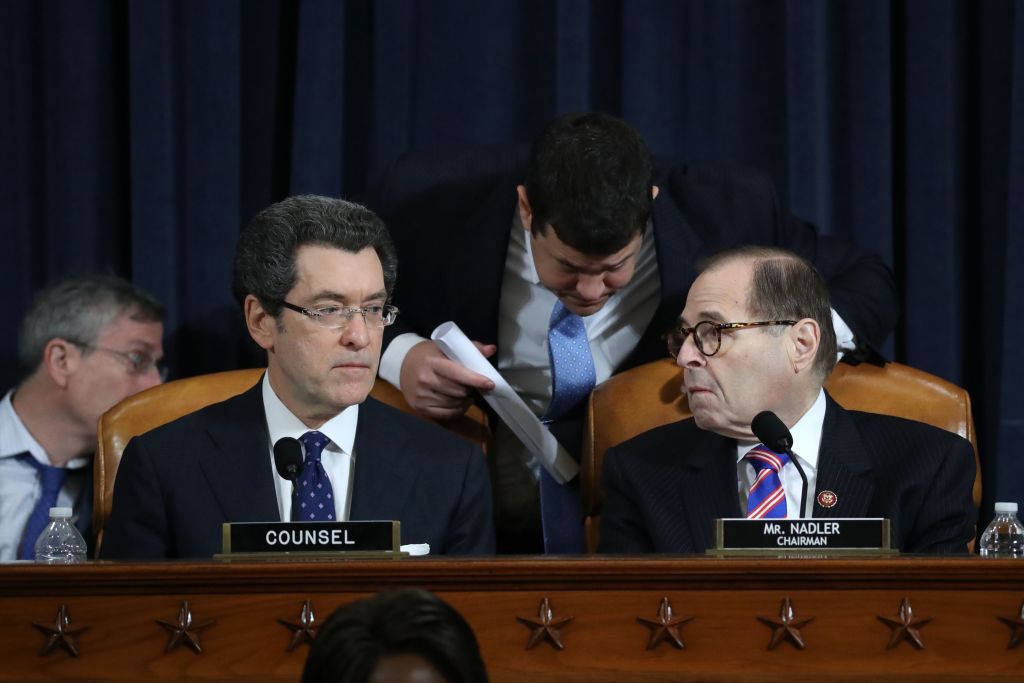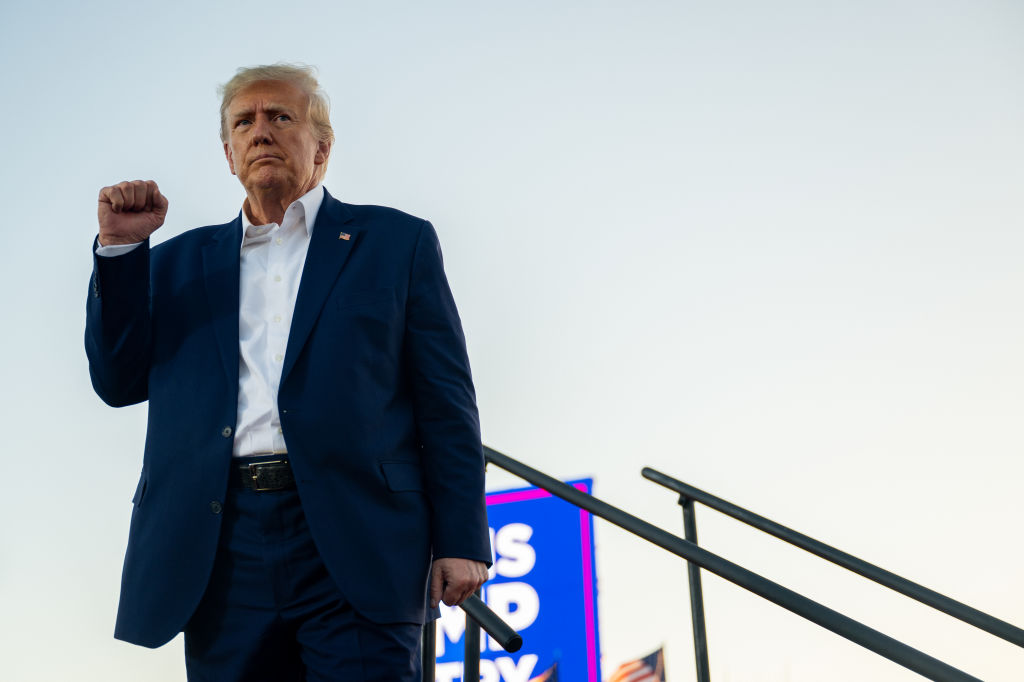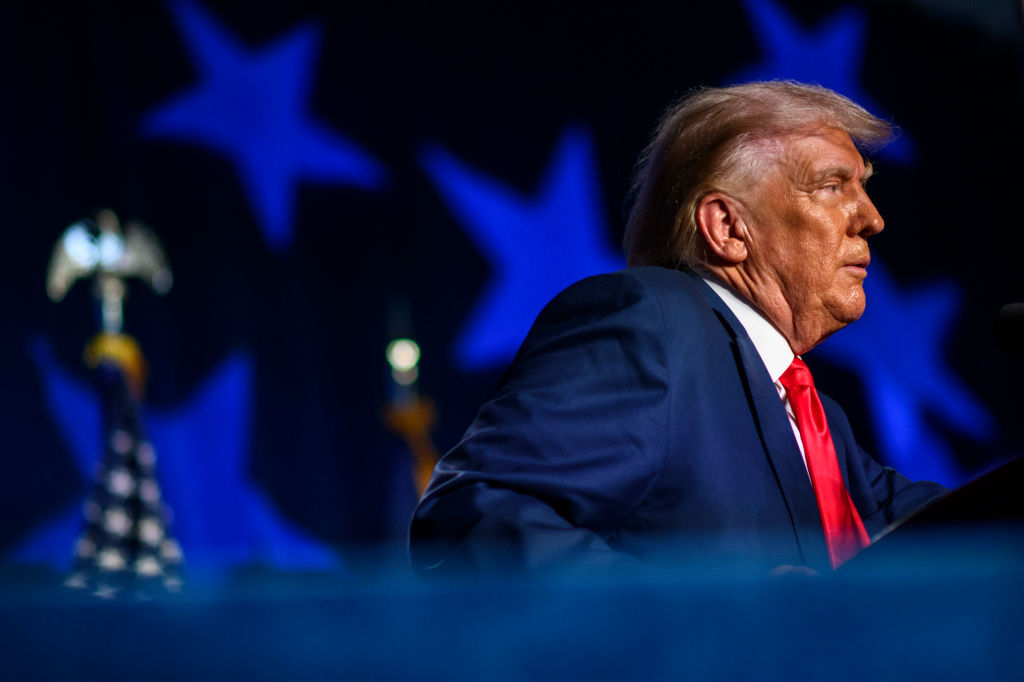Capitulating to threats and accusations will teach the Left a dangerous lesson.
Architect of a Sham

Norm Eisen, the man behind the phony Steele Dossier, wrote the script for the indictments of Donald Trump.
Special Counsel Jack Smith was appointed by Joe Biden late last year to lead two separate investigations into President Donald J. Trump. Each one of the four indictments to which President Donald Trump has been subjected – Jack Smith’s two federal indictments in addition to the state level indictments from District Attorneys Alvin Bragg of New York and Fani Willis of Georgia – are based on legal theories that were cobbled together from the findings of the January 6th Committee. The Committee’s findings helped tailor the specific legal arguments and recommendations featured in the “model prosecution memorandum,” spearheaded by Norman Eisen of the Brookings Institution, who previously served on the House Judiciary Committee where he oversaw the “impeachment and trial of President Trump.” Jack Smith’s indictments, as well as the indictments of Fani Willis and arguably even Alvin Bragg, albeit to a lesser extent, are deeply indebted to the legal theories in Norm Eisen’s memorandum, which were based on the January 6th Committee’s fabricated narrative.
There are substantial reasons for questioning the integrity of the Committee. One can begin with the highly partisan composition of the Committee itself (the only two Republican members, Rep. Liz Cheney (WY), and Rep. Adam Kinzinger (IL), both vocally opposed Donald Trump for years, and voted to certify the 2020 election results). None of the 147 members of Congress who objected to the ratification of the 2020 presidential election results appeared on the Committee, a list that included, among others, such notable members as current Chair of the House Judiciary Committee Jim Jordan; current U.S. Senate Committee on the Judiciary members Ted Cruz and Josh Hawley; and current House Speaker Kevin McCarthy, who, in his words, “agreed with objections that were made to two states, especially because constitutional questions have been raised about changes to election processes and whether these changes were approved by their respective legislatures, as required in Article II. The debate and votes were not about overturning an election or federalizing elections.”
In short, the January 6th Committee was deeply flawed, not only in composition, but regarding the plainly erroneous evidence it collected and relied upon to make dangerously far-reaching and reckless accusations about those who participated. This erroneous evidence, in turn, was used to recommend sweeping criminal charges against a class of overwhelmingly peaceful demonstrators, many of whom did not even breach the Capitol, or for that matter, show up on Capitol grounds on the day of January 6th.
A large portion of this evidence remains in government hands, including tens of thousands of hours of CCTV footage, of which only a fraction has been released and disseminated for public consumption. Much of the footage that has been released, such as that which was featured on Tucker Carlson Tonight earlier this year, goes a long way towards discrediting the findings of the January 6th Committee: namely, that either Trump or the protestors had the requisite intent to prove seditious conspiracy, or that they acted unilaterally and were not co-opted by agents of the federal government. This evidence, coupled with the investigative reporting that has unearthed credible information about the high prospect of federal agents, like Ray Epps, actively co-opting demonstrators at the scene to incite violence and enter the Capitol, further erodes the integrity of the findings and attendant narrative from the January 6th Committee. The Committee jumped the gun – before all the facts and evidence came to light – in memorializing the day’s events as an “insurrection,” which teed up subsequent criminal charges, even though there was no evidence of a coordinated effort to overthrow the government.
The Washington Post called Eisen, who was a diplomat in the Obama administration, a “critical force in building the case for impeachment” – indeed, some would say the mastermind behind the legal theories that would later merge in the indictments of both Fulton County D.A. Fani Willis of GA and Special Counsel Jack Smith. Eisen works for the Brookings Institution, a nonprofit public policy organization headquartered in D.C. that put together the discredited Steele dossier. It is thus no surprise that Eisen, who helped craft the predominant legal narrative for the government’s case for the events of January 6th, would later write op-eds for the New York Times supporting the logic of the Willis indictment, which relied heavily on his own memorandum’s legal theories.
Eisen’s 264-page memorandum – which he co-authored with Noah Bookbinder, Donald Ayer, Joshua Stanton, E. Danya Perry, Debra Perlin, Kayvan Farchadi, and Jason Powell – portrays the events of January 6th as a conspiracy between Trump and his lawyers to maintain power despite having lost the 2020 presidential election, which Eisen and his co-authors describe as an “indisputable fact.” Eisen also claims that there was “overwhelming proof that [Trump] knew he lost and repeatedly admitted it.” But these assertions do not comport with reality.
Certainly, Trump believed the results of the 2020 presidential election were fraudulent, a view he repeatedly expressed both in public and private, as evidenced in the testimony of Jared Kushner and other close White House personnel before the House Committee, as well as in leaks and other information that have come to light regarding President Trump’s state of mind. Furthermore, there is substantial evidence pointing to outcome-determinative fraud that affected the results of the 2020 presidential election.
As discussed in a previous item, there were pervasive irregularities in the 2020 election, both directly through electioneering and legislative rule changes, as well as indirectly through clandestine partnerships formed between private actors, such as Big Tech companies like Twitter, and members of intelligence agencies like the FBI, that colluded to suppress damaging information, such as the Hunter Biden laptop story, from being disseminated to the public in the weeks leading up to election day. The certainty with which Eisen and his co-authors denounce such claims of widespread election fraud or Donald Trump’s guilty state of mind contradicts what actually happened, which overwhelmingly suggests the opposite on both scores.
The Eisen memorandum also includes the first three counts (out of four) from the Jack Smith Indictment: (1) 18 U.S.C. § 371 (Conspiracy to Defraud the United States); (2) 18 U.S.C. § 1512(k) (Conspiracy to Obstruct an Official Proceeding); and (3) 18 U.S.C. §§ 1512(c)(2) (Obstruction of and Attempt to Obstruct an Official Proceeding). Thus, it appears that Eisen did most of the heavy lifting for Smith (and, by extension, Willis) beforehand, allowing the prosecutors to modify their complaints only slightly, often using identical statutes, to devise their own independent theories.
This itself raises serious double jeopardy concerns. However, considering what we have said about the fundamentally erroneous foundation of the Eisen memorandum, it would seem to vitiate the legal theories on which every indictment that used the Eisen memorandum as its source material was based. Therefore, it is doubtful that any of the indictments lodged against Trump, considering what we have discussed about the overwhelming evidence suggesting election fraud, for one, and the lack of guilty mens rea, for two, contain arguments that would hold up in a court of law.
Since Smith’s and Willis’ complaints are so heavily indebted to the Eisen memorandum – again, even to the point where Eisen is promoting Willis’ work in op-eds in the New York Times—it behooves us to scrutinize Eisen’s arguments directly. The Eisen memorandum fails to prove Trump’s culpable state of mind. The burden of proof required for a crime of this degree is at least beyond a reasonable doubt. Some constitutional scholars have argued, on very solid grounds, that the burden should be even higher than that for a crime allegedly committed by a President while in office. One would naturally expect, then, for a legal memorandum that claims to prove criminal intent to rely on only the most sophisticated evidence that had been forensically vetted for reliability. One would not expect for a memorandum involving a subject matter this serious to rely on hearsay and easily discreditable (and discredited) evidence, which derive from haphazardly strung together accusations that do nothing to support a theory of criminal liability. And yet, Eisen’s memorandum – and by extension, Smith’s and Willis’ indictments – do exactly that.
A cursory review of the Eisen memorandum – which is arguably the most factually and legally substantive of all the relevant legal documents – starkly reveals its myriad flaws. For starters, it attempts to thread an overarching theory of criminal liability by cobbling together several ad libbed remarks made by President Trump on the campaign trail and from alleged hearsay from private conversations:
- “Similarly, the focus of the third act, Trump’s incitement of the insurrection, has its origins in September 2020 when Trump first instructed his extremist supporters during a presidential debate to ‘stand back and stand by’—or even before the election when he began circulating misinformation about the coming vote.” (Page 10).
- “According to White House staffer Nicholas Luna, Trump called Pence a wimp. In a recorded interview, Ivanka Trump’s former chief of staff, Julia Radford, said that Ivanka told her that her father called Pence ‘the p-word.’” (Page 72).
- “According to a New York Times article citing two anonymous sources reporting on that call, Trump told Pence: ‘You can either go down in history as a patriot…or you can go down in history as a pussy.’” (Page 72).
Eisen preposterously construes a theory of criminal liability based on a hodgepodge of quotes carefully hand selected from politically heated moments during the campaign. Certainly, none of them would meet the high constitutional bar for fighting words or true threats, due to their generality, in addition to having no direct tendency to cause violence against a particular person or group. Moreover, absolutely none of these quotes – nor any of the other quotes Eisen incorporates in his memorandum, of which the above are a representative sample – are “directed to inciting or producing imminent lawless action,” nor are they “(2) likely to incite or produce such action” under Brandenburg’s test for imminent lawless action.
Accordingly, even the underlying theory falls far short of the level of competence expected of a legal analysis that is supposed to lay out a comprehensive theory of criminal liability. Least of all, for a criminal indictment against the President of the United States, which is the most serious of all claims requiring utmost sobriety and diligence. Those qualities, alas, are absent here. Instead, we see a flurry of boilerplate accusations that may pass muster for a cable news talk show, but surely not for an American court of law.
John Adams famously opined that we are “a Government of laws, not men.” To preserve that hallmark of American constitutionalism – in order to perpetuate the rule of law, we must be extremely vigilant about maintaining the highest standards for competence on the most fundamental legal principles: due process, presumption of innocence, protections against double jeopardy, and the other bedrock principles that make ordered liberty possible well into the twenty-first century. To neglect that most important generational duty would be to abdicate the call of our forefathers, and to commit the unforgivable tragedy of turning a society that was once a beacon of freedom the world over into a banana republic.
The American Mind presents a range of perspectives. Views are writers’ own and do not necessarily represent those of The Claremont Institute.
The American Mind is a publication of the Claremont Institute, a non-profit 501(c)(3) organization, dedicated to restoring the principles of the American Founding to their rightful, preeminent authority in our national life. Interested in supporting our work? Gifts to the Claremont Institute are tax-deductible.
The indictment of Donald Trump is a tipping point for free government.
Efforts to sow confusion and chaos in our election systems must be confronted.



